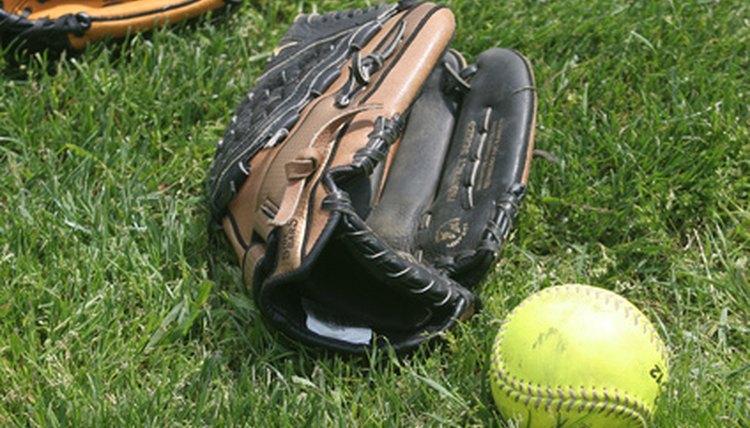Softball & Baseball Rules for Orange Safety Bags

At the youth level, sports should be entertaining and competitive, but safety should also be emphasized. In youth softball and baseball, one integral step toward safety is the use of the safety base or safety bag at first. This innovation leads to fewer collisions along the base line and less risk of injury.
Description
The safety base is built as two standard bases in one. A standard baseball or softball base measures 15 inches by 15 inches, while a safety base measures 15 inches by 30 inches. It is 2.5 inches high. Half the base is the standard white color and the other half is fluorescent orange. The safety base’s mount depends on its manufacturer. Some of these bases are driven into the ground on two spikes -- one in the center of each base, some have just one central spike and others have canvas straps that are attached to spikes in the ground.
Placement
The safety base is used only at first base and is placed directly on the first base line. The white portion of the safety base is placed inside of the line -- in fair territory, while the orange half is placed in foul territory. Depending on the sport -- softball or baseball -- and age of the participants, the placement of first base varies. It is placed no closer than 45 feet from home plate and no further than 90 feet from home plate.
Rules
The safety base is designed to prevent collisions and other contact incidents at first base. The first baseman and other defensive players are allowed only to touch the white portion of the safety base during play. If a defensive player’s foot touches the orange portion of the base, the umpire may call interference and award the runner a free base. This is an umpire’s judgment call. On offense, the runner may touch only the orange portion of the base during close plays. Because a runner is allowed to run through first base, he may run straight through the orange half, remaining in foul territory. If he touches the white half on a play at first, the defensive team may appeal the play. If the umpire noticed the runner's foot placement, he will be called out. If there is no play to be made at first base, such as on a hit that will result in a double, the batter-runner may touch the white half of the base while making his turn toward second. Batted balls that hit the white portion of the base are fair, while balls that hit the orange half are foul.
Results
The use of the safety base not only limits potential dangerous collisions at first but also incidences of ankle injuries caused by one player stepping on another’s ankle as they both stretch for the same base. When the first baseman has his foot on the white, and the runner sprints over the base, there's a chance of the runner rolling his ankle by stepping on the first baseman's foot.
References
Writer Bio
Toronto-based journalist William McCoy has been writing since 1997, specializing in topics such as sports, nutrition and health. He serves as the Studio's sports and recreation section expert. McCoy is a journalism graduate of Ryerson University.
